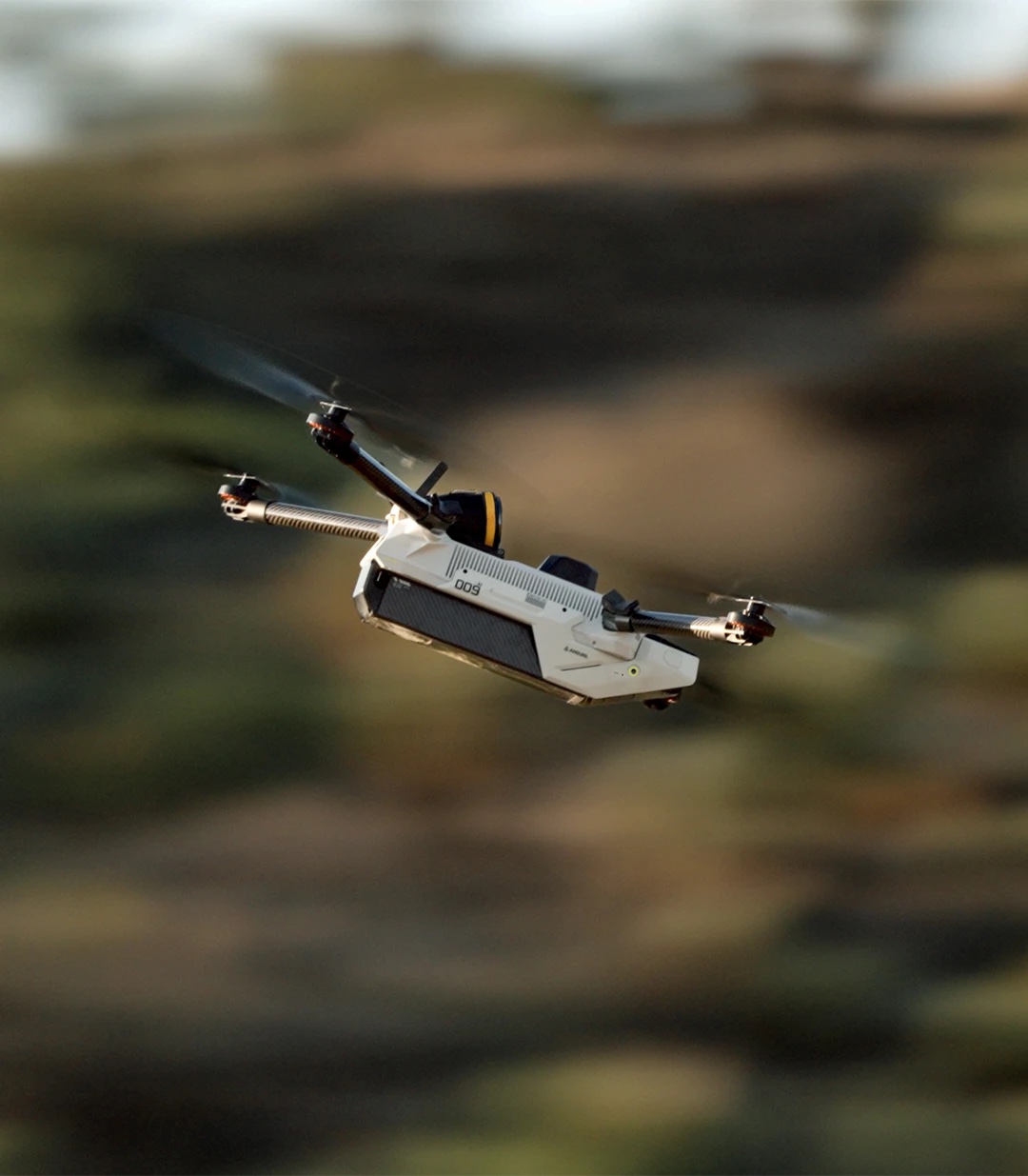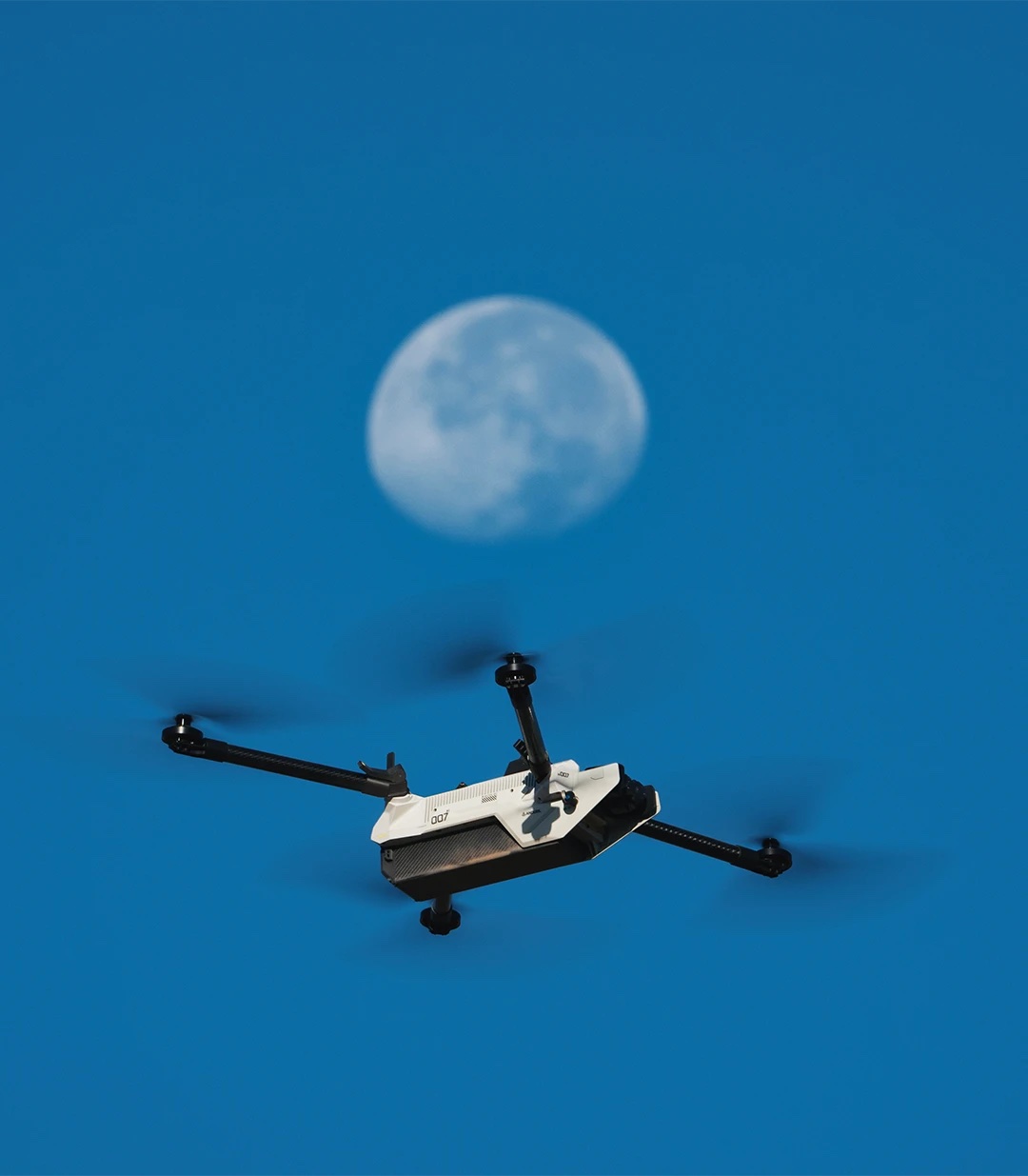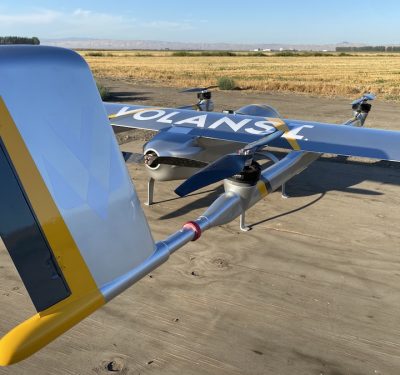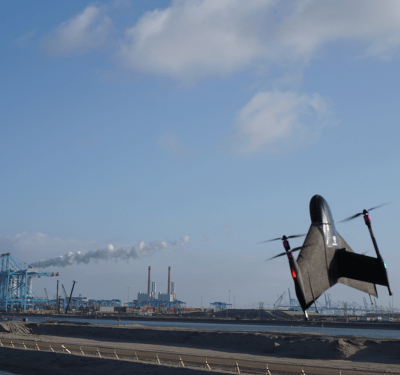On October 10, Anduril unveiled a new low-cost, man-packable quadcopter drone called Bolt designed for fielding by frontline infantry units.

While the standard Bolt is designed for tactical ISR and search-and-rescue missions, there’s also a Bolt-M loitering munition which the company identifies as one of the three competing models under consideration by the Marine Corps for its Organic Precision Fires-Light (OPF-L) competition.
This 12-15 pound vertical-takeoff quadcopter can be assembled in less than five minutes and incorporates an electro-optical/infrared camera supporting use in both day and night operations. Its battery can be hot-swapped in the field without tools, and Bolt-M’s warhead can be fused, defused or swapped for different types in the field. Anduril says it has a maximum range of 12 miles and endurance for 40 minutes.
Small drones have transformed with startling speed the high-intensity ground war resulting from Russia’s invasion of Ukraine. Still, the Army and Marine Corps are trying to figure how, and at what scale, it should seek to incorporate such SUAS given their own different capability sets, organization and doctrine compared to Russia and Ukraine’s ground forces.
It seems clear though that small reconnaissance and attack drones need to be integrated broadly amongst (or ‘organic to’) small frontline combat units, not pooled exclusively amongst specialist drone units, much as weapons like light and medium mortars and anti-armor weapons are distributed to small combat formations (squads, platoons, companies etc.).
In the ISR role, quadcopters SUAS have particularly proven highly effective at providing early warning of enemy ground attacks, or when attacking, facilitate detection followed by avoidance/targeting of concealed enemies. And when used for attack, SUAS give infantry an effective standoff and beyond-line-of-sight precision strike capability.
Anduril particularly emphasizes that Bolt’s hand-held GCS is designed for ease of use by non-specialist personnel, with flight and navigation generally performed automatically after the operator has pre-selected waypoints and (in the case of Bolt-M) approach method and fusing options. This is made possible leveraging the Lattice’s networked autonomy technology the company has incorporated into most of its systems, ranging from ISR UASs and loyal wingman jet fighters to cruise missiles and electronic warfare drones.
The company promotional literature claims operator input is reduced to deciding “…where to look, what to follow, how to engage, and when to strike” and notes operators can ‘draw’ a bounding box around an optically detected target to instruct the drone to follow and potentially attack it—instructions its onboard mission autonomy can execute even after losing connectivity or experiencing interruptions in line-of-sight to the tracked target.
A video released by Anduril shows a Bolt-M being instructed to stalk a moving truck. Then the operators order it to attack by specifying direction, engagement angle and altitudes over a target vehicle. The Bolt-M then executes a roughly 80-degree dive attack before detonating its fragmentation warhead a distance above the target.
Anduril also clarified that Thursday that Bolt-M carries (ats least by default) a 3-pound warhead by Kraken kinetics—adequate for combating light vehicles and infantry but falling a bit short of the 4 to 6-pound shaped-charge warheads taken from RPGs commonly used on FPV loitering munitions in Ukraine. The lower weight likely satisfies the OPF-L requirement, which is not intended for tank-busting.

You can compare the claimed characteristics of Bolt with those of its rivals in the OPF-L competition below.
| OPF-L Competitors | ||||||
| Estimated cost per shot | Range | Endurance | UAV weight | Payload | Deploy Time | |
| AeroVironment Switchblade-300 Block 20 | ~$50,000 per defense budget records | 12+ miles or 18.6 miles using ER antenna | 20+ minutes | 3.7 lbs. | Max 4 lbs. | 2 minutes |
| Anduril Bolt-M | “Low tens of thousands” | 12 miles | 40 minutes | 12-15 lb. | 3 lbs. | Under 5 minutes |
| Teledyne FLIR Rogue 1 | “Mid tens of thousands” | Over 12 miles (6.6 miles radius) | 30 minutes | 10 lbs. | 2.5 lbs. | “Less than 2 minutes” |
| Figures in quotes were stated directly to IUS, the rest are derived from promotional materials. All three loitering munitions are characterized as supporting modular payloads. | ||||||
Can America build cheap loitering munitions?
One of the key factors making loitering munitions so deadly in Ukraine is their low cost, with kamikaze FPVs assembled for as little as $300-400 ‘per shot’ due to manufacture using widely available COTS components, particularly from China.
This enable both sides to manufacture loitering munitions in terrifying quantities and allows forces in the field to deploy them against everything that moves, whether high-value targets like main-battle tanks, down to targeting individual soldiers.
But the U.S. defense industry struggles when it comes to producing low-cost platforms. Is Bolt any different?
Anduril told IUS that Bolt-M was aimed to “…fill the gap between improvised/hobby-shop solutions and expensive, exquisite solutions” and priced in the “low tens of thousands”, with exact price depending on configuration, payload and order volume.
That figure is well over an order of magnitude costlier than a typical munition in Ukraine, but may be lower than its rivals. Of three down-select contracts issued by the Marine Corps for OPF-L in April, Anduril’s was the smallest at $6.4 million, compared to $8.9 million for AeroVironment’s veteran low-weight Switchblade-300 drone (albeit its latest Block 20 configuration), and $12 million for Teledyne FLIR’s Rogue One which is particularly designed for safe recovery and reuse if no target is engaged.
Of course, the above loitering munitions likely are far more reliable than the crudest kinds widely used= in Ukraine and require a much lower degree of operator skill. Nor is it realistically possible for U.S. industry to make weapons as cheaply as volunteer groups churning out crude drones made of commercial-grade parts for minimal or no pay.
Nonetheless, narrowing that intimidating cost gap while determining the right balance between affordability-versus-capability remain the key challenge for programs like OPF-L. Another factor is the relative value military procurers place with familiar contractors with proven production capacity, versus openness to embracing newcomers with the attendant risks and potential benefits.






